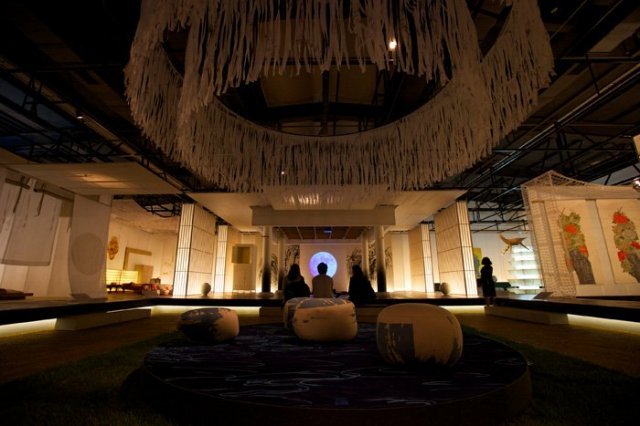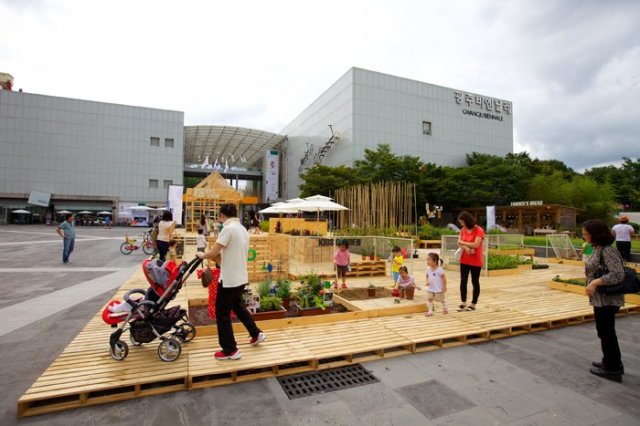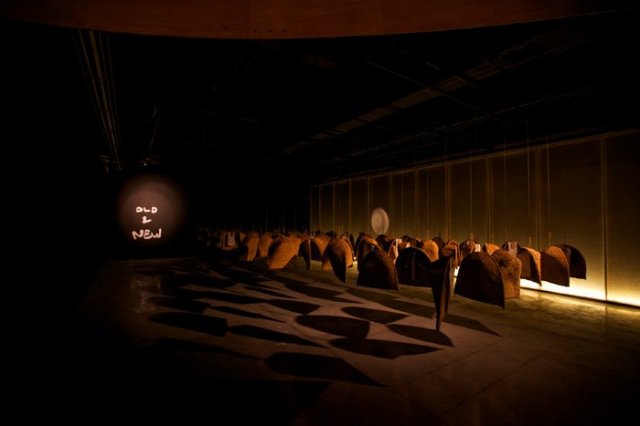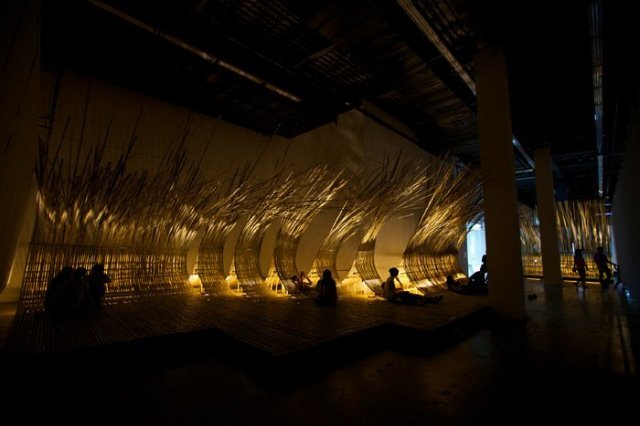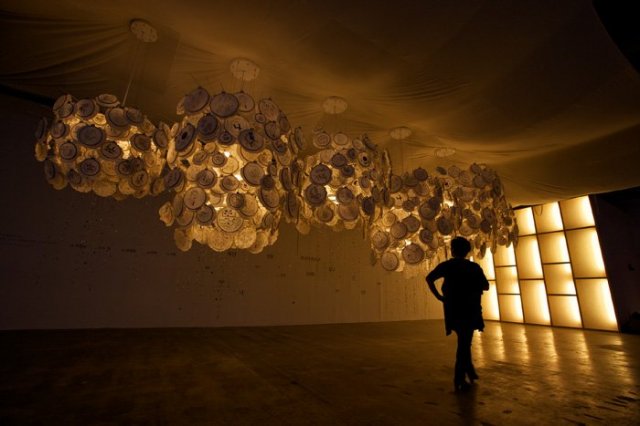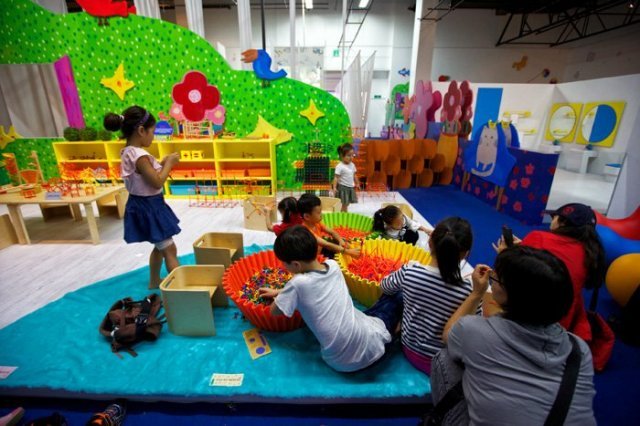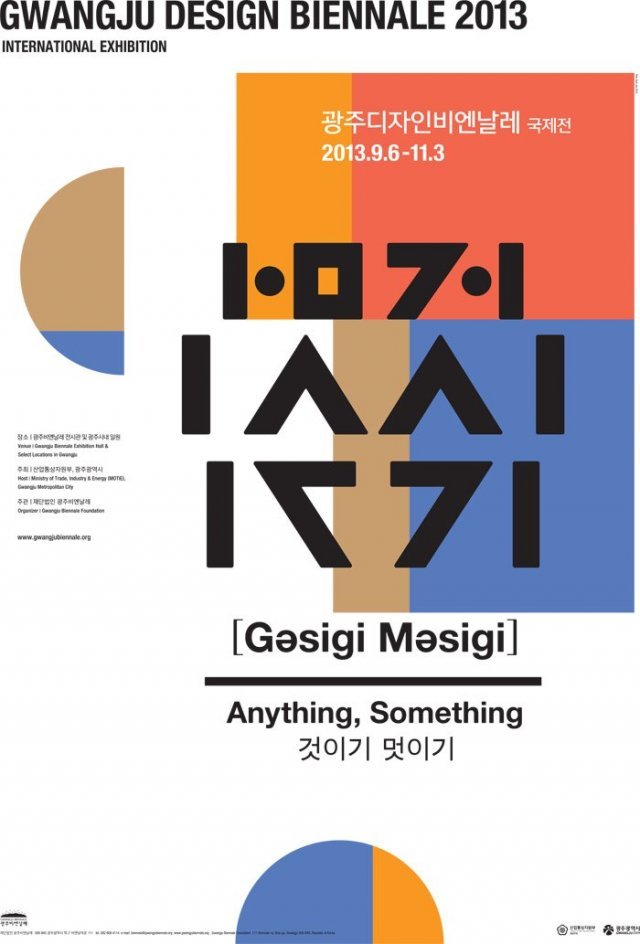Gwangju Design Biennale shows creations from everyday life

Gwangjuis having a festival of designs that can be seen in everyday life. The theme "Anything, Something" (Gesigi, Mesigi) of the fifthGwangju Design Biennaleis intended to show that anybody can be a designer and present practical designs that can be utilized in real life.
"We are all great designers", said Lee Young-hye, chief director of the biennale, on the press day on September 5. "Designs exist for us".
"Asian Painting Motif Design", a boutique hotel themed on traditional Korean architecture and paper (photo courtesy of Gwangju Design Biennale).
The concept inspired by two of the most frequently used words (Gesigi, Mesigi) in Jeolla provinces is equivalent to "what you may call it" in its meaning. The designs shown are more approachable by the public than simply aesthetic.
Lee said although the theme sounds a little vague, it was chosen "to remind designers of the importance of communication".
The "Garden Design" project installed before the square of the Gwangju Biennale Exhibition Hall enjoys huge popularity among families (photo courtesy of Gwangju Design Biennale).
The "Garden Design" project in front of the Gwangju Biennale Exhibition Hall is the work of architect Choi Si-young and is enjoying immense popularity with families on weekends. Vegetables such as Chinese cabbage, radish, and green onions are planted in the "Kitchen Garden" of the project. There is also a "Kids Garden" where children can play house with soil.
Among the notable displays, there is "Old & New" in exhibition hall 1, which shows household goods that were used decades ago in Korea such as traditional bamboo baskets, fans, hats, bales of hay, and socks.
Traditional household goods featured in "Old & New" (photo courtesy of Gwangju Design Biennale)
In exhibition hall 3 is the bamboo-made installation "Nangchang Nangchang" by Japanese designer Kuma Kengo. The work has a passage in the middle and resting places on the sides. The piece was made of 1,320 bamboo sticks donated by Damyang County, Jeollanam-do (South Jeolla Province), the host of the upcoming tenth World Bamboo Congress in 2015. The work is named after the Korean adverb "Nangchang Nangchang" describing a movement of flexible wavering.
"Nangchang Nangchang" by Japanese designer Kuma Kengo (photo courtesy of Gwangju Design Biennale)
In exhibition hall 4 is "Asian Painting Motif Design", a hotel space themed with traditional Korean architecture and paper made from mulberry trees. The work created by four designers has a grass field in the middle and resting places on the sides.
In special exhibition halls 1 and 2, five people including Hongik University design professor Kan Ho-sup and fashion designer Woo Young-mi designed uniforms to be actually worn by Gwangju's taxi drivers. The Universal Package Design Center at Chosun University in Gwangju created designs for plastic garbage bags with various motifs including cartoon characters. There are also design works for bags of rice grown in the Gwangju and Jeolla regions.
"The Precious Things in Gwangju" contains words selected by 1,000 Gwangju citizens in a survey (photo courtesy of Gwangju Design Biennale).
"The Precious Things in Gwangju" is made of cotton and round wooden frames. The work contains 20 words selected in a survey of 1,000 Gwangju citizens, which asked what is most important in their lives.
In addition to the exhibitions, there are also lectures, seminars, and outdoor concerts. Kuma Kengo will give a lecture titled "Body and Space" and there will also be a seminar titled "Farming and Design", both on September 13. Visitors can also create their own environmentally friendly designs and enjoy various concerts in front of the main exhibition hall on weekends and holidays including the Chuseok holiday that falls on September 18, 19, and 20.
"The Precious Things in Gwangju" contains words selected by 1,000 Gwangju citizens in a survey (photo courtesy of Gwangju Design Biennale).
The works on display are created by 304 designers representing 20 countries and 24 companies. The Gwangju Design Biennale continues until November 3 and takes place at the main exhibition hall and the Uijae Museum of Korean Art.
Entrance costs KRW 10,000 for adults, KRW 6,000 for adolescents, and KRW 4,000 for children. For more information, call 062-608-4114 or visit www.gwangjubiennale.org.
Poster of the Gwangju Design Biennale (image courtesy of Gwangju Design Biennale)
By Limb Jae-un
Korea.net Staff Writer
[email protected]
Source from :www.korea.net
